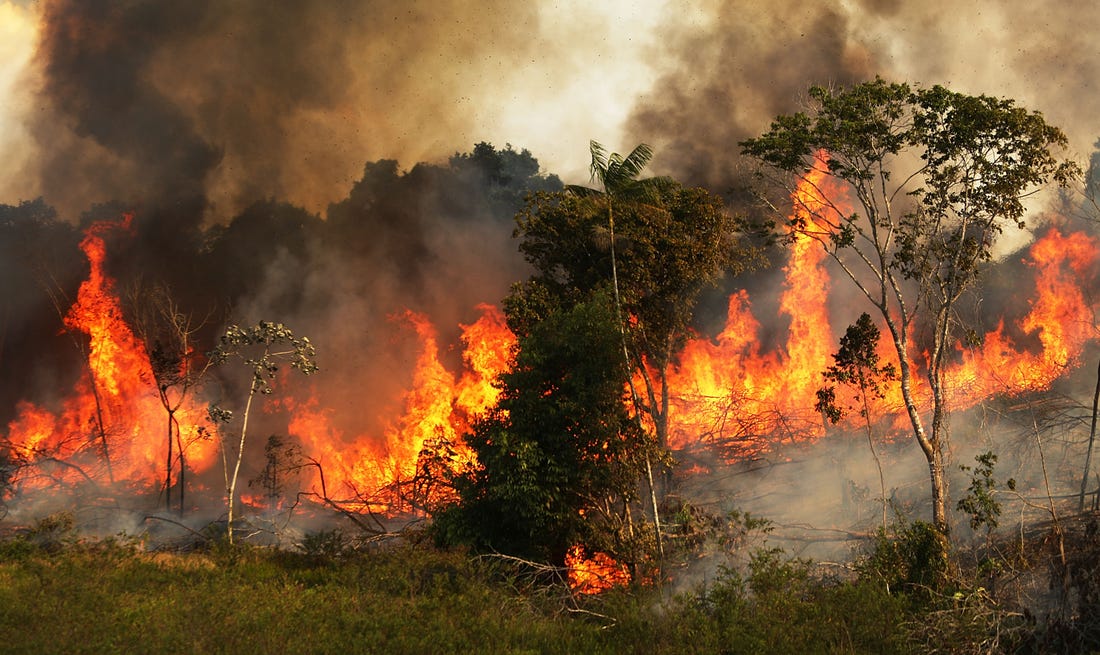RIO DE JANEIRO, BRAZIL – The number of fires in the Amazon in 2020 has exceeded the former 2005 record and is now the largest in history.
Data from the National Institute of Space Research (INPE) show that by Sunday, October 11th, the state of Amazonas had already recorded 15,700 active outbreaks, while in 2005 the cumulative total for the whole year was 15,644 cases.
The collection of active fire outbreaks data by INPE has been conducted by satellite since 1998.
August also recorded the highest number of fires for a single month in the past 22 years. According to INPE’s Monitoring of Active Hotspots by State table, there were 8,030 fires in the state.

The months of August and September are traditionally the driest of the year in the Amazon Region and also represent the period in which the highest rates of patch burning and deforestation occur, according to experts.
When comparing years, behind 2020 and 2005, 2015 recorded the third-highest rates in history. There were 13,419 cases. In fourth place was 2019, with 12,676 outbreaks.
The municipalities of Apuí and Lábrea, in the far south of the state, near Mato Grosso, were the most affected by fires that year. In Apuí, by the end of the second week of October, 2,740 outbreaks had been recorded, while in Lábrea there were 2,237. The two municipalities feature on INPE’s list among the ten most affected cities by the flames in the whole country.
Amazon is the most affected biome
According to INPE data, the Amazon is the most affected biome by the fires in 2020. Approximately 45.6 percent of the cases recorded in the country during the year occurred in the region. Data show that between January and September this year, the number of recorded fires is the highest since 2010. That year, there were 102,409 outbreaks, while in 2020 there were 76,030 over the same period.
In addition to the fires, the Legal Amazon area also registers an increase in deforestation. The region had an area of 964 km² under alert in September, the second-largest in five years, according to a G1 survey. In the state of Amazonas, the municipality of Lábrea, which also registers the second-highest number of fires in the whole state during the year, has already deforested approximately 42.06 km² in 2020.
Deforestation and patch burning are related. The fire is part of a strategy to “clear” the soil that was deforested to be used later in livestock or planting. It is the so-called “Amazon deforestation cycle”.
For geographer and environmentalist Carlos Durigan, director of the WCS-Brazil Program, an organization that preserves wildlife and natural areas around the world through science, patch burning represents the consolidation of deforested areas in agricultural fields or for cattle raising activities.
“Amazonas is the largest state in Brazil and in recent years we have seen this significant increase in the south of the state. It is nothing more than the replacement of a way of life, the Amazonian way of producing by the way of producing in other regions, such as the South and Midwest. And that is linked to agribusiness, agriculture and extensive ranching,” he explained.
The expert is also concerned about the expansion of highways in the region, such as BR-319 in the south of the state. According to him, the deforestation and patch burning figures may increase even more if there is no control by the appropriate authorities.
“Unless there is a social-environmental safeguard by authorities, we will see this destruction scenario established in the South of Amazonas move up into central Amazonas, affecting the lives of people living in the Purus and Madeira region, all the way to Manaus. We are losing a heritage of immeasurable value, such as biodiversity, forest, ecosystem services, and quality of life,” he said.
Source: G1

